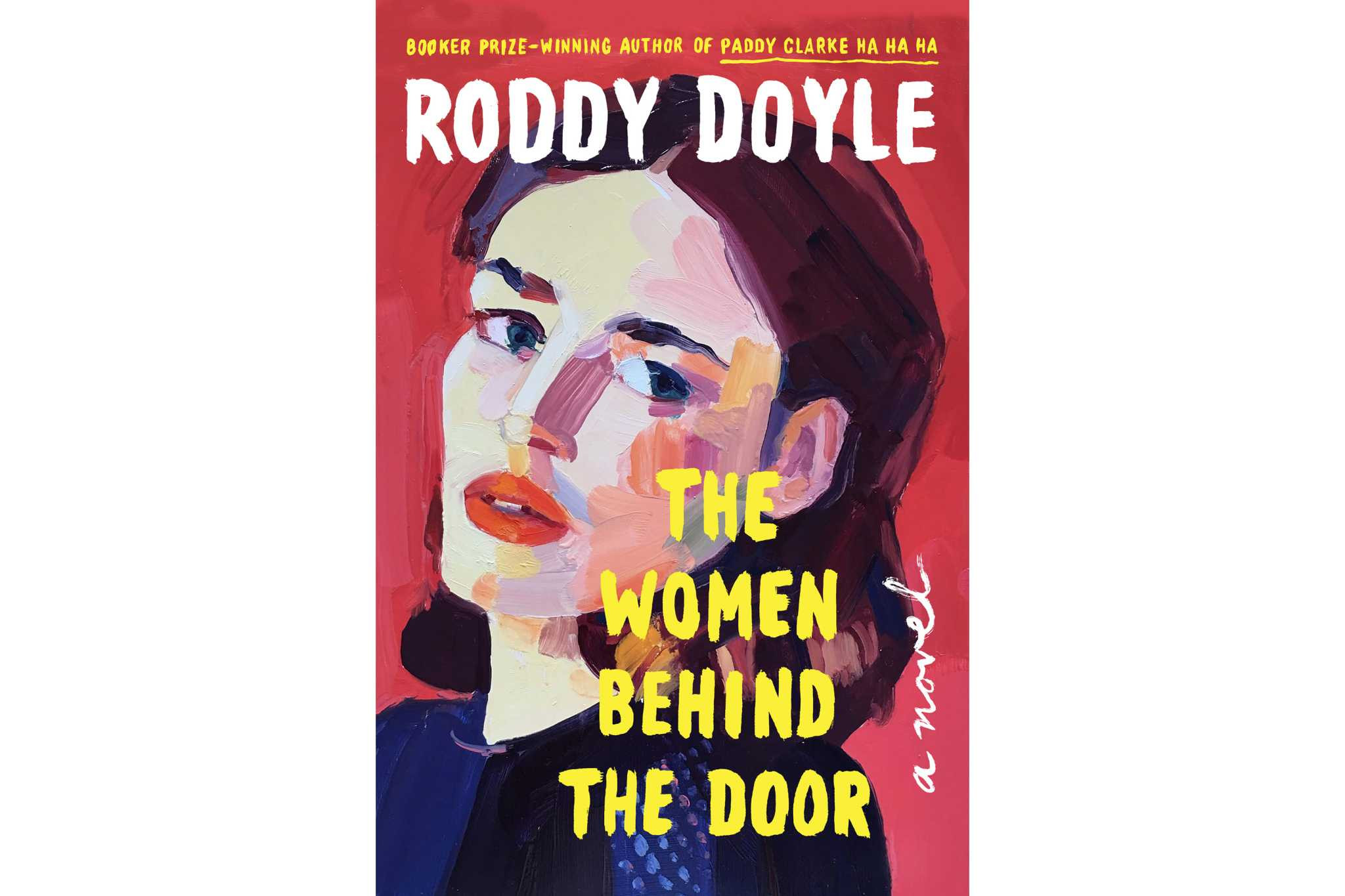Roddy Doyle’s new novel might be the best thing he has written, and I qualify that only because it’s the third book featuring his character Paula Spencer, and the previous two remain the high points of his output. In The Woman Who Walked Into Doors (1996) and Paula Spencer (2006), the character of Paula – Dubliner, mother, cleaner, alcoholic, domestic abuse survivor – gave us masterpieces of empathy, economy and unexpected humour. You don’t need to have read them to enjoy The Women Behind the Door, though you’ll surely want to once you’ve finished it.
To bring newcomers up to speed, in the first book Paula’s brutal thug of a husband, Charlo, got what he deserved – a frying pan to the head – and was later shot dead by police. (Paula would rather have been a divorcee – “it’s a great word, as sexy as fuck” – than a widow.) In the second, she was struggling to stay off the drink – making the beds all day to keep her mind and hands busy – and raising four children.
As her new story opens, it’s May 2021 and things seem bright for Paula, who’s now 66. “She’s had a great day.” We meet her best friend, Mary: they both work at a dry cleaners and share more laughs than she ever thought possible. “Paula sometimes wished that she’d met Mary sooner in her life. But she knew – Mary wouldn’t have been her friend now. She’d have given up on Paula decades ago – 40 years ago. […] It was better this way.”
She’s in a casual relationship with Joe, an older man from posh Howth. “That was the difference – a difference – between them. Joe couldn’t eat a piece of cake without a fork – Paula didn’t even need her hands.” They’re temporarily separated by Covid restrictions, and “she doesn’t miss him. But she wants him to phone her, all the same.” Of her children, Paula remains closest to her eldest, Nicola, the one who seems to have risen above her wrong beginnings. She loves being out with Nicola. “She’s my daughter, Paula wants to shout. Believe it or not. She came out of me.”
The first chapter of The Women Behind the Door, which takes up a quarter of the book, is perfect because it captures everything. The banter between Paula and Mary, her ever-present memories of Charlo, and her feelings on being a parent of middle-aged children. Doyle’s control is so nuanced that on one page I was first laughing at Paula’s worries how to organise her children’s names on her phone without offending anyone – and then fighting back tears when she sees Nicola’s name and thinks: “That’s the number she’s phoned most often – that’s the number that’s saved her.”
Doyle pushes the reader’s buttons by opening Paula to us in her entirety: strength and vulnerability. Nothing is hidden: we get her opposing thoughts, such as how she remains traumatised by Charlo’s violence, but can still remember the time “when his tongue on her neck could make her disappear”.
Most of all, she tortures herself with complicated feelings for Nicola. “She wonders if she’ll ever catch up with it – the fact that Nicola isn’t her fairy godmother. She’ll have to. She wants to.” She will: it’s coming. As the tone of the book darkens, a hundred-page scene with just mother and daughter makes Paula wonder if Nicola really did climb clear, or whether the “badness” in her life could not be cut out.
Paula loves Nicola but also resents her because of her perfection. Yet she fears now – as her daughter prepares to tell her “something she wouldn’t survive hearing” – that she has damaged Nicola’s perfect life. And she feels guilty about that – which she then takes out on Nicola. It’s heady stuff, a brew of emotional turmoil that shows how we all contain multitudes and contradict ourselves. And all this is delivered in a scene that consists of no more than two women talking.
In one sense, The Women Behind the Door is a gloomy book: it shows how Paula, and Nicola, and all of us, can act against our own better judgment. It reminds us how, as Graham Greene put it in The Quiet American: “We all get involved in a moment of emotion and then we can’t get out.” But it’s full of energy and life, it completes a trilogy to read and reread, and it shows us finally, joyously, how, whatever life throws at Paula Spencer, “she’ll manage. She always has.”
Paula Spencer is back for an encore performance in Roddy Doyle's latest miracle of a novel, The Women Behind the Door. In this installment, the 66-year-old mother, grandmother, recovering alcoholic and domestic violence survivor, has weathered the first year of the Covid lockdown in reasonably good sprits.
Her abusive husband, Charlo, is long dead, and her four adult children are finally out on their own. She has a sturdy support system in place, including best friend Mary, who got her a part-time gig at a dry cleaning shop that she enjoys, and longtime, lovably pedantic boyfriend Joe, who teaches her about high-minded things like opera, history and birds.
Then, on the very day in spring 2021 when she and Mary get their first jab at a Dublin theater, celebrating later with a bag of McDonald's on a windswept beach outside town, her eldest, 40-something daughter shows up on her doorstep and asks if she can move back home.
Over the course of this mesmerizing, dialogue-driven narrative, Doyle will gradually reveal why Nicola - who Paula always considered the most reliable of her kids -walked out on her family, including nice-guy husband Tony and their three daughters. Especially when their youngest, Lily, was still in high school.
Initially, her dramatic departure doesn't seem to make sense. But as the two women talk and Paula reflects on her past, it becomes clear how deeply alcoholism and abuse have scarred all the members of Paula's family and so Nicola's decision to walk away from hers - from any family at all - begins to seem entirely reasonable.
Doyle first introduced Paula in his 1996 novel The Woman Who Walked into Doors. The title alludes to an excuse that battered women sometimes give to explain their injuries. Ten years later, he wrote a follow-up, "Paula Spencer," which found the widowed, working-class heroine newly sober, reckoning with the damage done to her children.
It is no wonder that Doyle, whose other novels include the Booker Prize-winning Paddy Clarke Ha Ha Ha and The Commitments, has brought her back for another go-round. She is fabulous company, whether she is gossiping with Mary or marching through down-at-the-heels, pandemic-scarred Dublin, observing the Roma people gather at the base of the James Joyce statue on North Earl Street and getting clipped by an immigrant food delivery worker zipping by on his e-bike.
With Paula, Doyle has created a fictional character as memorable as Molly Bloom or the Wife of Bath.
Nearly two decades after he last wrote about Paula Spencer, Doyle was compelled to return to her story in spring 2021, when he was getting his first Covid vaccine at The Helix Theatre in Dublin.
The theatre was once home to a production of The Woman Who Walked Into Doors, and it got Doyle thinking: what would Paula make of the day he was having? The new book grew from there – and even opens with Paula getting her first vaccine in the very same location. The story sees Paula in a much better place in life – she’s sober, her abusive ex-husband, Charlo, is dead, she’s got a new job she enjoys, her children are grown up and she’s seeing a new man.
But her relative peace is shattered when her middle-aged daughter, Nicola, knocks on her door in a crisis – forcing the two to reflect on their relationship and things in the past that Paula might have preferred to leave buried.
While Doyle can’t imagine returning to some of his characters – you won’t, for example, see an update on Paddy Clarke’s life any time soon – Paula occupies a special place in his brain.
“I’m the same age, roughly [as her], and she’s been in my life creatively for over half my life… Since I was in my early 30s,” he explains. Doyle is 66, and he says the fact they’re similar ages is “important”.
“If I was 30, I could talk about mortality quite easily and totally accept that life comes to an end, but when you get to this stage of life, mortality isn’t an abstract, and you don’t want to be nearer to it.”
He also says “the camera angle changes” as you grow older. “Things become more significant. My diary is still full of things I’m looking forward to… But at the same time, you’re dragging along more and more life.
“There’s a certain looking backwards and forwards, and Paula does it all the time. I wouldn’t have done that in the first book.”

















